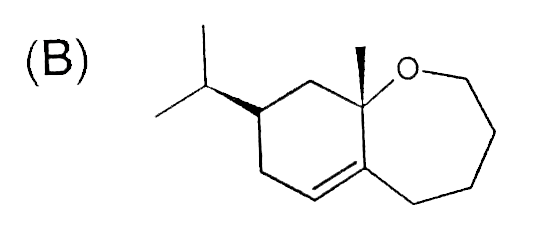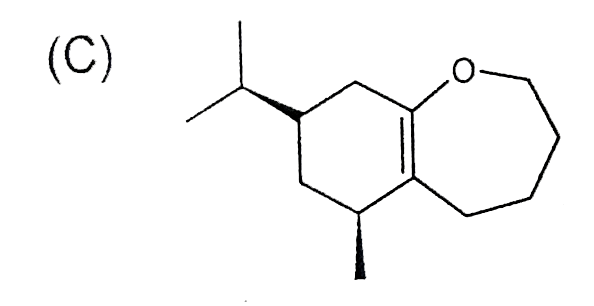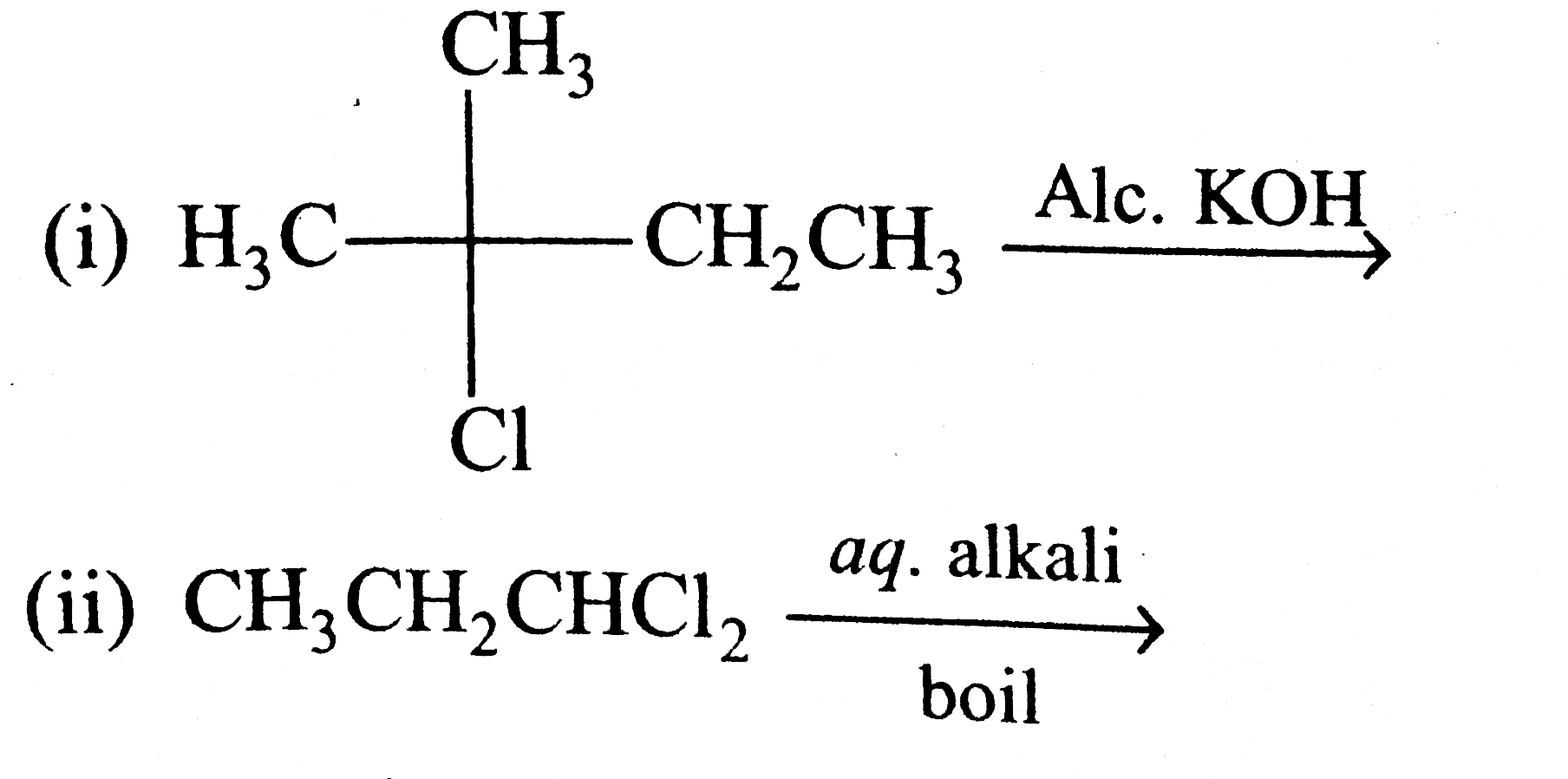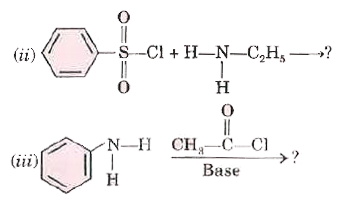Write the formula of the main product formed in the reaction :
(CH3)2CHClNa−−−−−→Dry ether
To solve the question regarding the reaction of (CH₃)₂CHCl with sodium in the presence of dry ether, we can follow these steps:
Step 1: Identify the Reactant
The reactant given is (CH₃)₂CHCl, which is 2-chloropropane. It is an alkyl halide.
Step 2: Understand the Reaction Conditions
The reaction is carried out with sodium (Na) in the presence of dry ether. This indicates that we are likely dealing with the Wurtz reaction, which is a coupling reaction involving alkyl halides.
Step 3: Mechanism of the Reaction
In the presence of sodium and dry ether, the alkyl halide undergoes a radical mechanism. Sodium will react with the halogen (Cl in this case) to form a radical. The reaction can be represented as follows:
- (CH₃)₂CHCl + Na → (CH₃)₂C• + NaCl
Here, (CH₃)₂C• is the radical formed after the chlorine atom is removed.
Step 4: Coupling of Radicals
The radical formed will combine with another radical of the same type (since we have two moles of the alkyl halide). Therefore, the coupling of two radicals will yield:
- (CH₃)₂C• + (CH₃)₂C• → (CH₃)₂C-C(CH₃)₂
Step 5: Write the Product Formula
The main product formed from the reaction is:
- C₆H₁₄ (or (CH₃)₄C₂, which is hexane)
Final Answer
The formula of the main product formed in the reaction is:
- C₆H₁₄
---
The reactant given is (CH₃)₂CHCl, which is 2-chloropropane. It is an alkyl halide.
The reaction is carried out with sodium (Na) in the presence of dry ether. This indicates that we are likely dealing with the Wurtz reaction, which is a coupling reaction involving alkyl halides.
In the presence of sodium and dry ether, the alkyl halide undergoes a radical mechanism. Sodium will react with the halogen (Cl in this case) to form a radical. The reaction can be represented as follows:
- (CH₃)₂CHCl + Na → (CH₃)₂C• + NaCl
The radical formed will combine with another radical of the same type (since we have two moles of the alkyl halide). Therefore, the coupling of two radicals will yield:
- (CH₃)₂C• + (CH₃)₂C• → (CH₃)₂C-C(CH₃)₂
The main product formed from the reaction is:
- C₆H₁₄ (or (CH₃)₄C₂, which is hexane)
The formula of the main product formed in the reaction is:
- C₆H₁₄
Topper's Solved these Questions
- BOOK - MODERN PUBLICATIONCHAPTER - HALOALKANES AND HALOARENESEXERCISE - Integer Type Questions6videos
HALOALKANES AND HALOARENES
- BOOK - MODERN PUBLICATIONCHAPTER - GENERAL PRINCIPLES AND PROCESSES OF ISOLATION OF ELEMENTSEXERCISE - COMPETION FILE (Integer Type Numerical Value Type Questions)5videos
GENERAL PRINCIPLES AND PROCESSES OF ISOLATION OF ELEMENTS
- BOOK - MODERN PUBLICATIONCHAPTER - ORGANIC COMPOUNDS CONTAINING NITROGEN EXERCISE - UNIT PRACTICE TEST5videos
ORGANIC COMPOUNDS CONTAINING NITROGEN
Similar Questions
Knowledge Check
- Question 1 - Select One
Major product formed in the following reaction is
 (CH3)2CuLi−−−−−−−→Diethyl etherA
(CH3)2CuLi−−−−−−−→Diethyl etherA B
B C
C D
D
- Question 2 - Select One
Identify product P in the following reaction sequence.
CH3CH2OHGrignard reagent−−−−−−−−−→dry ether ΔA↓C2H5OHP+BAAn alcoholBAn etherCAn acidDAn ester - Question 3 - Select One
Consider the following sequence of reactions and identify the final product (Y)
CH3CH2CH2BrMg−−−−−→dry ether XCO2/H3O+−−−−−−−→dry etherYACH3CH2COOHB(CH3)2CHCOOHCCH3CH2CH2CH2COOHDCH3CH2CH2COOH
Structural formulae of some monomers are given below. Write the structural formula of the homopolymer formed from them.
CH2=CH3∣C∣CH3View SolutionWrite the structure of the major organic product expected from each of the following reactions:
CH3CH2CHCl2Boil−−→alkaliView SolutionWrite the main product of the following reactions:
(i) CH3−C∣∣O−NH2Br2+NaOH−−−−−−−→
(ii) CH3CNLiAlH4−−−→View SolutionThe major product formed in the following reaction is :
CH3−CH3∣C∣CH3−C∣OHH−CH3concH2SO4−−−−−−→a few drops Major productView SolutionWrite the structures of the major organic product expected from each of the following reactions :
(i)
(ii) CH3CH2CHCl2aq.alkali−−−−→boilView Solution



